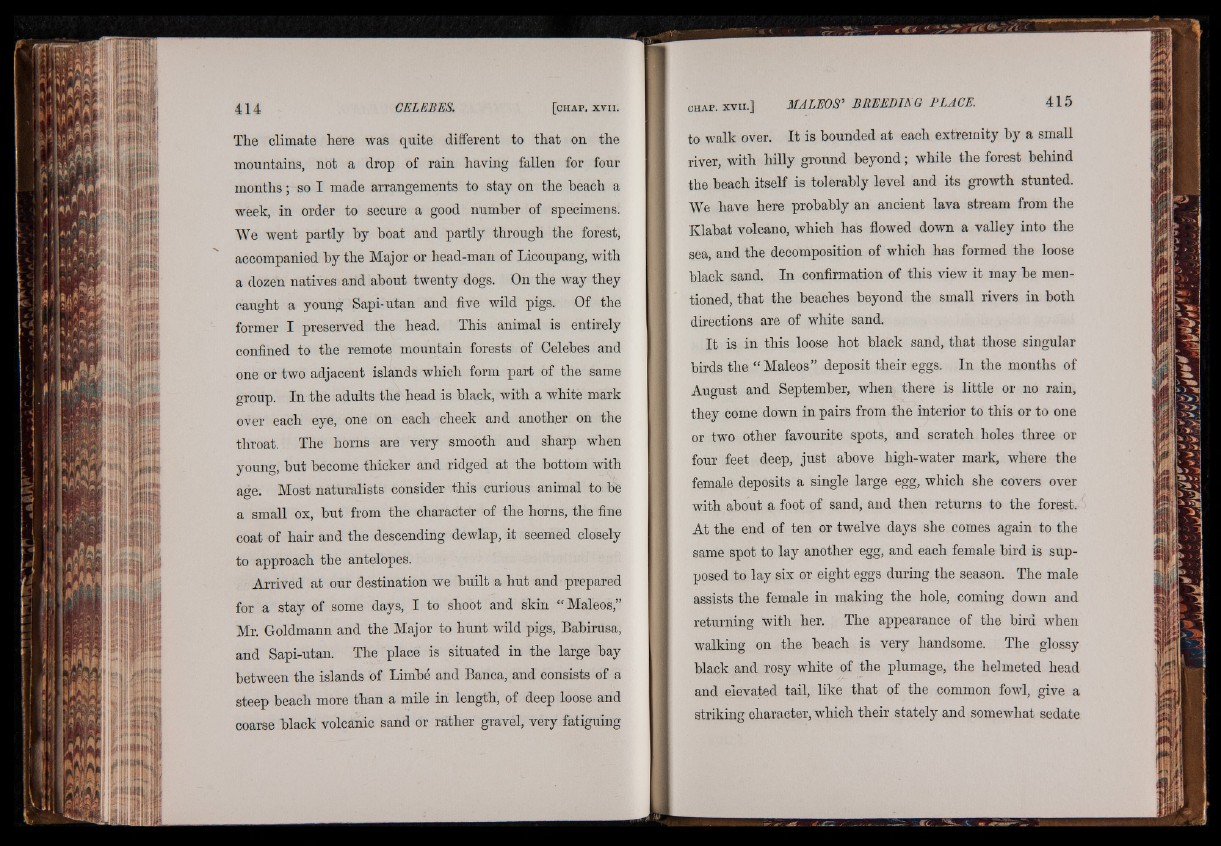
The climate here was quite different to that on the
mountains, not a drop of rain having fallen for four
months; so I made arrangements to stay on the beach a
week, in order to secure a good number of specimens.
We went partly by boat and partly through the forest,
accompanied by the Major or head-man of Licoupang, with
a dozen natives and about twenty dogs. On the way they
caught a young Sapi-utan and five wild pigs. Of the
former I preserved the head. This animal is entirely
confined to the remote mountain forests of Celebes and
one or two adjacent islands which form part of the same
group. In the adults the head is black, with a white mark
over each eye, one on each cheek and another on the
throat. The horns are very smooth and sharp when
young, but become thicker and ridged at the bottom with
age. Most naturalists consider this curious animal to be
a small ox, but from the character of the horns, the fine
coat of hair and the descending dewlap, it seemed closely
to approach the antelopes.
Arrived at our destination we built a hut and prepared
for a stay of some days, I to shoot and skin “ Maleos,”
Mr Goldmann and the Major to hunt wild pigs, Babirusa,
and Sapi-utan. The place is situated in the large bay
between the islands of Limbe and Banca, and consists of a
steep beach more than a mile in length, of deep loose and
coarse black volcanic sand or rather gravel, very fatiguing
to walk over. It is bounded at each extremity by a small
river, with hilly ground beyond; while the forest behind
the beach itself is tolerably level and its growth stunted.
We have here probably an ancient lava stream from the
Klabat volcano, which has flowed down a valley into the
sea, and the decomposition of which has formed the loose
black sand. In confirmation of this view it may be mentioned,
that the beaches beyond the small rivers in both
directions are of white sand.
It is in this loose hot black sand, that those singular
birds the “Maleos” deposit their eggs. In the months of
August and September, when there is little or no rain,
they come down in pairs from the interior to this or to one
or two other favourite spots, and scratch holes three or
four feet deep, just above high-water mark, where the
female deposits a single large egg, which she covers over
with about a foot of sand, and then returns to the forest.
At the end of ten or twelve days she comes again to the
same spot to lay another egg, and each female bird is supposed
to lay six or eight eggs during the season. The male
assists the female in making the hole, coming down and
returning with her. The appearance of the bird when
walking on the beach is very handsome. The glossy
black and rosy white of the plumage, the helmeted head
and elevated tail, like that of the common fowl, give a
striking character, which their stately and somewhat sedate